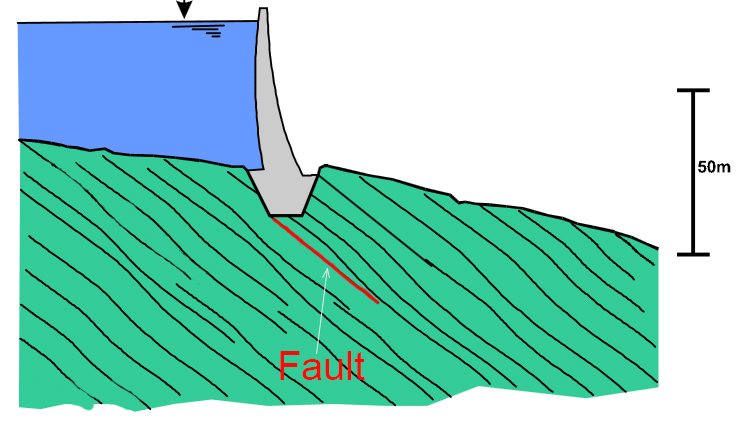The collapse of Malpasset Dam, is considered to be one of the worst civil engineering disasters of the 20th century.
It was an arch dam on the French Riviera, which collapsed on 1959. The breach created a massive wall of water, (40 meters high, moving with 70km/h) destroying two small villages, Malpasset and Bozon, killing 423 people in the resulting flood.
Why did this happen?
The collapse was the result of a series of unfortunate events, and human errors.
First of all, due to lack of proper funding, the geological study of the region was not thorough. As a result, a tectonic fault which was located underneath the dam’s foundation, wasn’t found in the study.
Also, it was raining. A lot! Between November 19 and December 2, there was 50 cm of rainfall, and 13 cm in 24 hours before the breach. The water level in the dam was only 28 cm away from the edge.
The final blow was given by the authorities. It was still raining when the dam guardian wanted to open the discharge valves, but the authorities refused, claiming a highway construction site near the dam was in danger of flooding. Five hours before the breach, the water release valves were opened, but with a discharge rate of 40 m³/s, it was not enough to empty the reservoir in time.
 How did this happen?
How did this happen?
Well, it’s quite simple. Water entered the fault under the damn. The gneiss rock which was there is known to be relatively impermeable, which means the water in the fault cannot escape through the pores of the rock. Then more water entered the fault and as we all know, in general, liquids are incompressible. And yes, you guessed right, the damn was kicked from underneath and collapsed.
We mentioned Permeability above. It is the property of rocks that is an indication of the ability for fluids (gas or liquid) to flow through rocks. High permeability will allow fluids to move rapidly through rocks. Permeability is affected by the pressure in a rock. The unit of measure is called the darcy, named after Henry Darcy who gave us the Darcy’s Law.

As always, you can try using fxSolver, with the Darcy’s Law equation in our database.
Please, remember to follow our social media pages, by hitting the buttons below!
